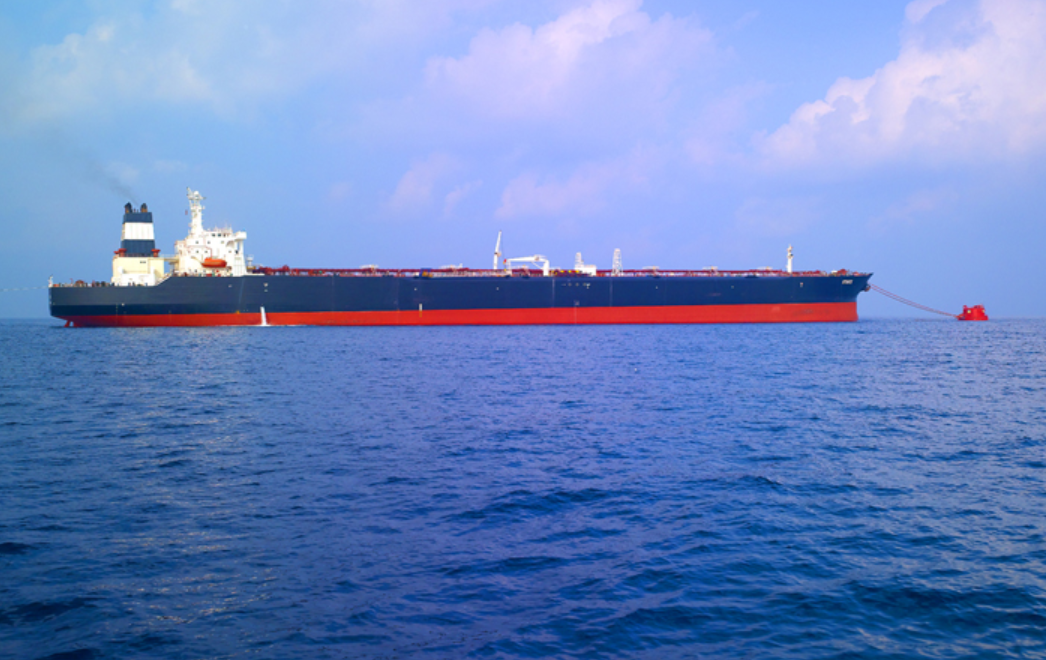A single buoy mooring (SrM) (also known as single-point mooring or SPM) is a loading buoy anchored offshore, that serves as a mooring point and interconnect for tankers loading or offloading gas or liquid products. SPMs are the link between geostatic subsea manifold connections and weathervaning tankers. They are capable of handling any tonnage ship, even very large crude carriers (VLCC) where no alternative facility is available.
Parts
There are four groups of parts in the total mooring system: the body of the buoy, mooring and anchoring elements, product transfer system and other components.
Buoy body
The buoy body may be supported on static legs attached to the seabed, with a rotating part above water level connected to the (off)loading tanker. The two sections are linked by a roller bearing, referred to as the "main bearing". Alternatively the buoy body may be held in place by multiple radiating anchor chains. The moored tanker can freely weather vane around the buoy and find a stable position due to this arrangement.
Mooring and anchoring parts
Moorings fix the buoy to the sea bed. Buoy design must account for the behaviour of the buoy given applicable wind, wave and current conditions and tanker tonnages. This determines the optimum mooring arrangement and size of the various mooring leg components. Anchoring points are greatly dependent on local soil condition.
Mooring components
Anchors or piles - To connect the mooring to the seabed
Sinker or anchor chain joint to buoy (SPM)
Anchor chain
Chain stoppers - To connect the chains to the buoy
Hawser arrangement
A tanker is moored to a buoy by means of a hawser arrangement. Oil Companies International Marine Forum (OCIMF) standards are available for mooring systems.
The hawser arrangement usually consist of nylon rope, which is shackled to an integrated mooring uni-joint on the buoy deck. At the tanker end of the hawser, a chafe chain is connected to prevent damage from the tanker fairlead. A load pin can be applied to the mooring uni-joint on the buoy deck to measure hawser loads.
Hawser systems use either one or two ropes depending on the largest tonnage of vessel which would be moored to the buoy. The ropes would either be single-leg or grommet leg type ropes. These are usually connected to an OCIMF chafe chain on the export tanker side (either type A or B depending on the maximum tonnage of the tanker and the mooring loads). This chafe chain would then be held in the chain stopper on board the export tanker.
A basic hawser system would consist of the following (working from the buoy outwards):
Buoy-side shackle and bridle assembly for connection to the padeye on the buoy; Mooring hawser shackle; Mooring hawser; Chafe chain assembly; Support buoy; Pick-up / messenger lines; Marker buoy for retrieval from the water.
Under OCIMF recommendations, the hawser arrangement would normally be purchased as a full assembly from a manufacturer.
Product transfer system
The heart of each buoy is the product transfer system. From a geostatic location, e.g. a pipeline end manifold (PLEM) located on the seabed, this system transfers products to the offtake tanker.
The basic product transfer system components are:
Flexible subsea hoses, generally referred to as “risers”
Floating hose string(s)
Marine Breakaway Coupling
Product swivel, valves and piping
Risers
The risers are flexible hoses that connect the subsea piping to the buoy. Configuration of these risers can vary depending on water depth, sea conditions, buoy motions, etc.
Floating hose string
Floating hose string(s) connect the buoy to the offloading tanker. The hose string can be equipped with a breakaway coupling to prevent rupture of hoses/hawser and subsequent oil spills.
Product swivel
The product swivel is the connection between the geostatic and the rotating parts of the buoy. The swivel enables an offloading tanker to rotate with respect to the mooring buoy. Product swivels range in size depending on the capacity of attached piping and risers. Product swivels can provide one or several independent paths for fluids, gases, electrical signals or power. Swivels are equipped with a multiple seal arrangement to minimise the possibility of leakage of product into the environment.
Other components
Other possible components of SPMs are:
A boat landing, providing access to the buoy deck,
Fendering to protect the buoy,
Lifting and handling equipment to aid materials handling,
Navigational aids for maritime visibility, and fog horn to keep moving vessel alert.
An electrical subsystem to enable valve operation and to power navigation aids or other equipment.

From Wikipedia
Note: If you found anything violating your copyright, please contact us, we would remove them as soon as possible.




